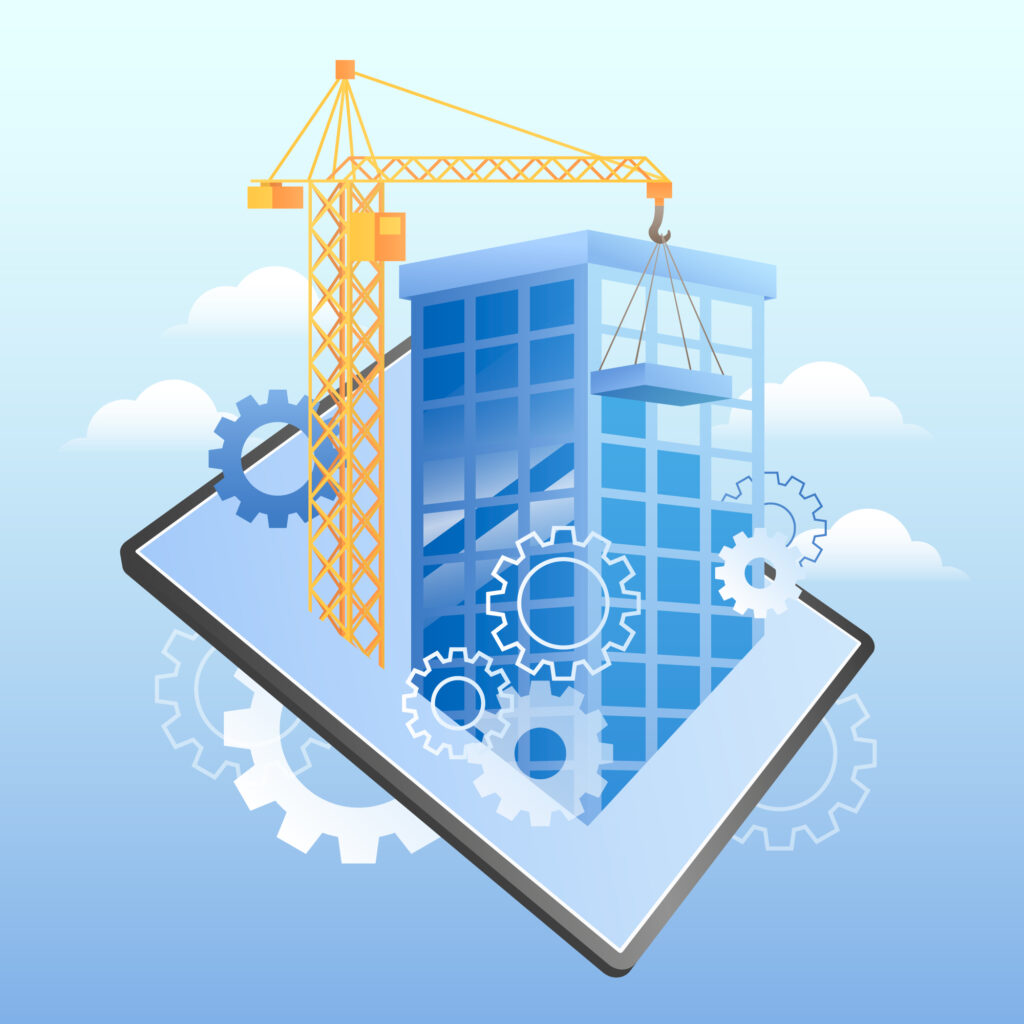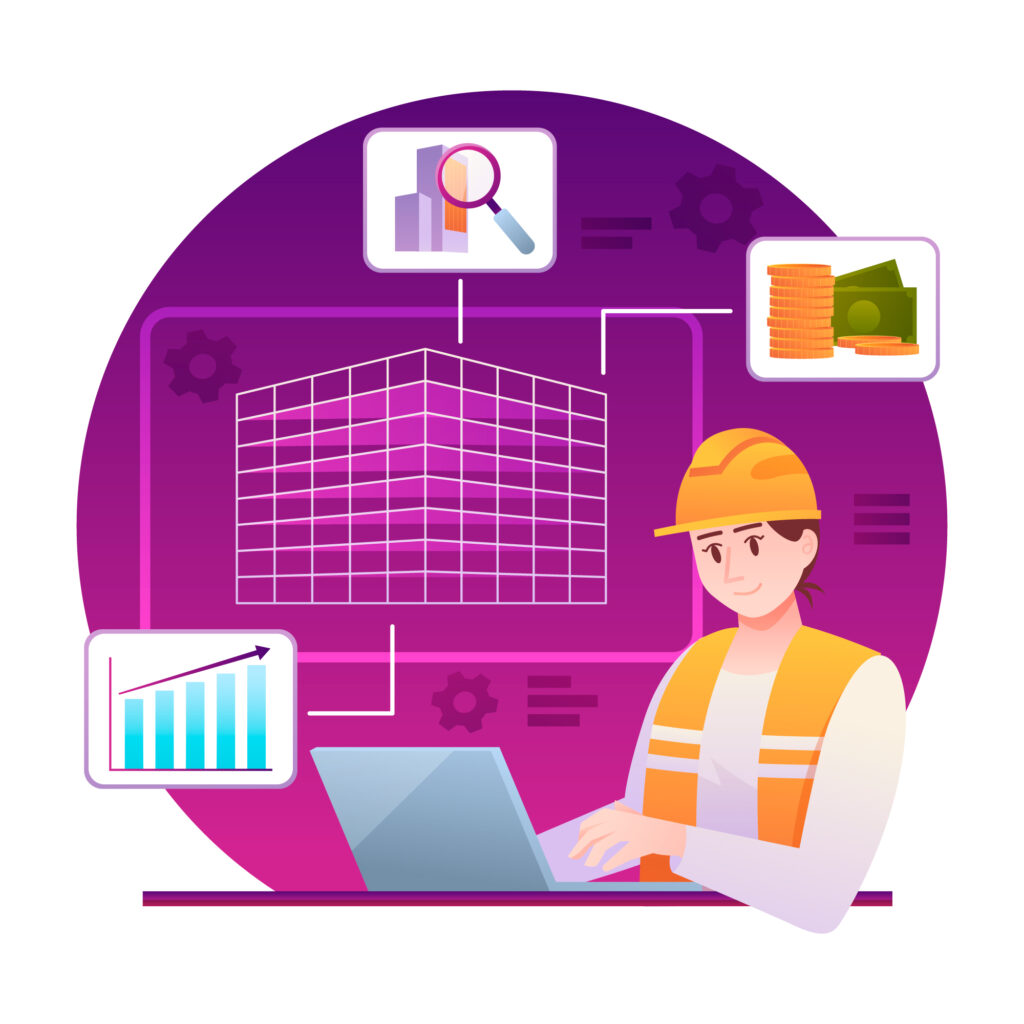In the construction industry, our tools are crucial for getting the job done. While technology was once considered unnecessary, some companies now recognize it as an invaluable tool. But, there’s still a considerable way to go as the construction industry remains hesitant to fully adopt technology.
During the early stages of PDI Drywall, integrating technology into my company was a no-brainer. I developed an estimating software that revolutionized my business, enhancing efficiency, accuracy, and consistency in the bidding process. This journey eventually led me to consult with other businesses and delve into multi-family construction. More on that later.
First, let’s explore the present landscape of technology in construction.
What’s the Current State of Technology in Construction?
I’ve seen firsthand that the construction industry moves slowly when it comes to embracing new technologies. A study by the accounting firm KPMG sheds light on this:
- Only 8% of construction companies consider themselves “cutting edge” in regards to technology.
- Less than 30% of construction companies use mobile devices to monitor project progress.
- Many construction firms struggle to manage the increasing amount of available data.
- Over 60% of construction executives admit to lagging behind or following industry trends and consider themselves “behind the curve.”
When I began consulting with construction companies on how to integrate new technologies into their business, it was evident that many were still reliant on outdated tools like fax machines and had yet to fully adopt computers.
There were big gaps between the potential benefits of modern technology and the actual practices within these companies. Many companies were stuck in traditional workflows that negatively affected their efficiency and productivity.
Despite these challenges, there was a growing recognition of the need to embrace technological advancements to remain competitive. Since I began consulting, I’ve seen construction companies increasingly exploring new tools and systems, seeing the potential for improved efficiency and project outcomes.
Before we dive into the benefits further, let’s take a closer look at some examples of available technology in the construction industry.

Examples of Technology in the Construction Industry
- Estimating software: This tool generates precise cost estimates for construction projects, helping companies manage budgets effectively and create accurate timelines.
- Project management software: Used for scheduling, time tracking, and team communication, this software streamlines workflow and enhances collaboration.
- Building information modeling software (BIM): Offers detailed representations of plans and blueprints, enabling better visualization and planning.
- Drones: Employed for aerial surveys, site inspections, and progress monitoring, drones provide valuable data and insights.
- Mobile apps: Enable real-time data collection, improving workflow efficiency and enhancing collaboration among team members. (1)
Now, what are the advantages of integrating technologies like these into construction businesses?
The Benefits of Adopting Technology in Construction
Embracing technology holds immense potential to accelerate project timelines, cut costs, and improve communication. While it requires an investment upfront, it has huge payoffs in the long run.
Improved Accuracy and Consistency
Technology provides instant access to project data, especially through mobile and cloud-based platforms. Estimating software, for instance, improves the accuracy of cost estimates by minimizing errors and inefficiencies, offering real-time insights into materials, labor, and resources costs. Standardized templates and calculation methods further reduce human errors.
Enhanced Collaboration
Tablets and smartphones facilitate seamless collaboration between job sites and office personnel, enabling real-time data access and eliminating delays associated with paper-based records. Whether it’s contracts, blueprints, or other important documents, everyone stays updated and connected.
Cost Savings
While technology implementation requires upfront costs, it yields long-term savings by reducing errors and boosting efficiency. For complex projects like multi-family buildings with intricate fire mitigation requirements, accurate estimating software and plans streamline processes and prevent costly mistakes.
Competitive Advantage
Technology improves quality control, enhances safety, and fosters innovation. By adopting advanced tools and systems, companies will experience shorter project timelines and improved profitability, giving them an advantage over their competition. Plus, technology is adaptable and grows alongside businesses, catering to their changing needs.

Embracing Technology to Grow PDI Drywall
Since childhood, I’ve been forging my own path. Raised by a single mother, I naturally assumed the role of the “fixer” in our household. Growing up surrounded by women, I never bought into the notion that fixing things or construction was exclusively men’s work. My first tool was a butter knife, surprisingly handy for many tasks, and I’ve been resourceful ever since.
As I delved into construction, I used this resourceful mindset to my advantage. I chose to run my business differently, rather than simply following the crowd. The company where I learned drywall wasn’t even using computers, but I recognized the significance and potential of technology when I established my own venture. Understanding the value of integrating technology, I made it a cornerstone of my business strategy.
Being a young woman with a drywall company made me unique, but it also gave me the confidence to forge my own path. During the recession, I seized the opportunity to increase my income by teaching other drywall companies how to utilize technology, starting with my own estimating software, which I coded myself. This endeavor opened doors to the world of constructing multi-family buildings, propelling me forward.
Long before many drywall companies had an online presence, I took the initiative to create a website for my business. Embracing technology has been instrumental in the growth of PDI Drywall, enabling me to reach new heights.

What’s Holding Construction Companies Back?
Despite the benefits of integrating technology, many construction companies are hesitant to adopt new methods. One major factor is the tight budgets that many firms operate within. Implementing technology requires both time and financial investment. This includes purchasing equipment, training staff, and covering ongoing maintenance costs. They may even need to hire more staff to operate the new systems.
Additionally, the introduction of new technology can disrupt normal operations, leading to resistance from staff who may be accustomed to traditional methods.
Implementing technology into any construction business requires strategy and vision. By emphasizing a culture of learning and growth and managing the transition process, companies can successfully implement new technology into their operations. Embracing technology in construction isn’t just about keeping up with the times— it’s about staying competitive and ensuring long-term success in an ever-evolving industry.
References:
- https://www.devicemagic.com/blog/6-types-of-construction-technology-you-will-use-in-the-future/
- https://assets.kpmg.com/content/dam/kpmg/xx/pdf/2016/09/global-construction-survey-2016.pdf
Photos: www.freepik.com
- https://www.freepik.com/free-photo/construction-worker-working-out- doors-with-project_3276302.htm
- https://www.freepik.com/free-vector/gradient-bim-illustration_38893513.htm
- https://www.freepik.com/free-vector/gradient-bim-illustration_38739300.htm
- https://www.freepik.com/free-photo/low-angle-old-man-looking-smartphone_5342293.htm


Write a Comment